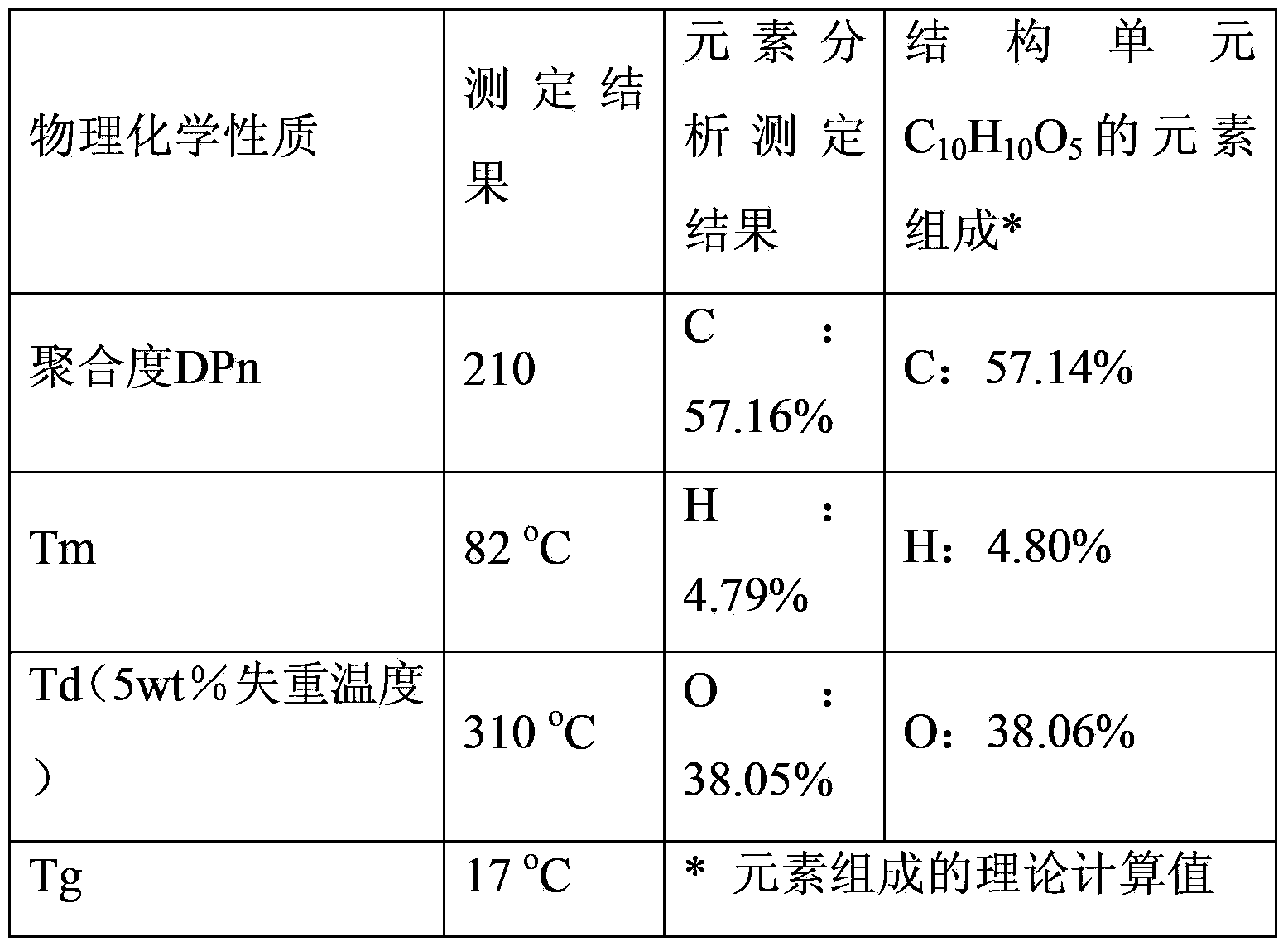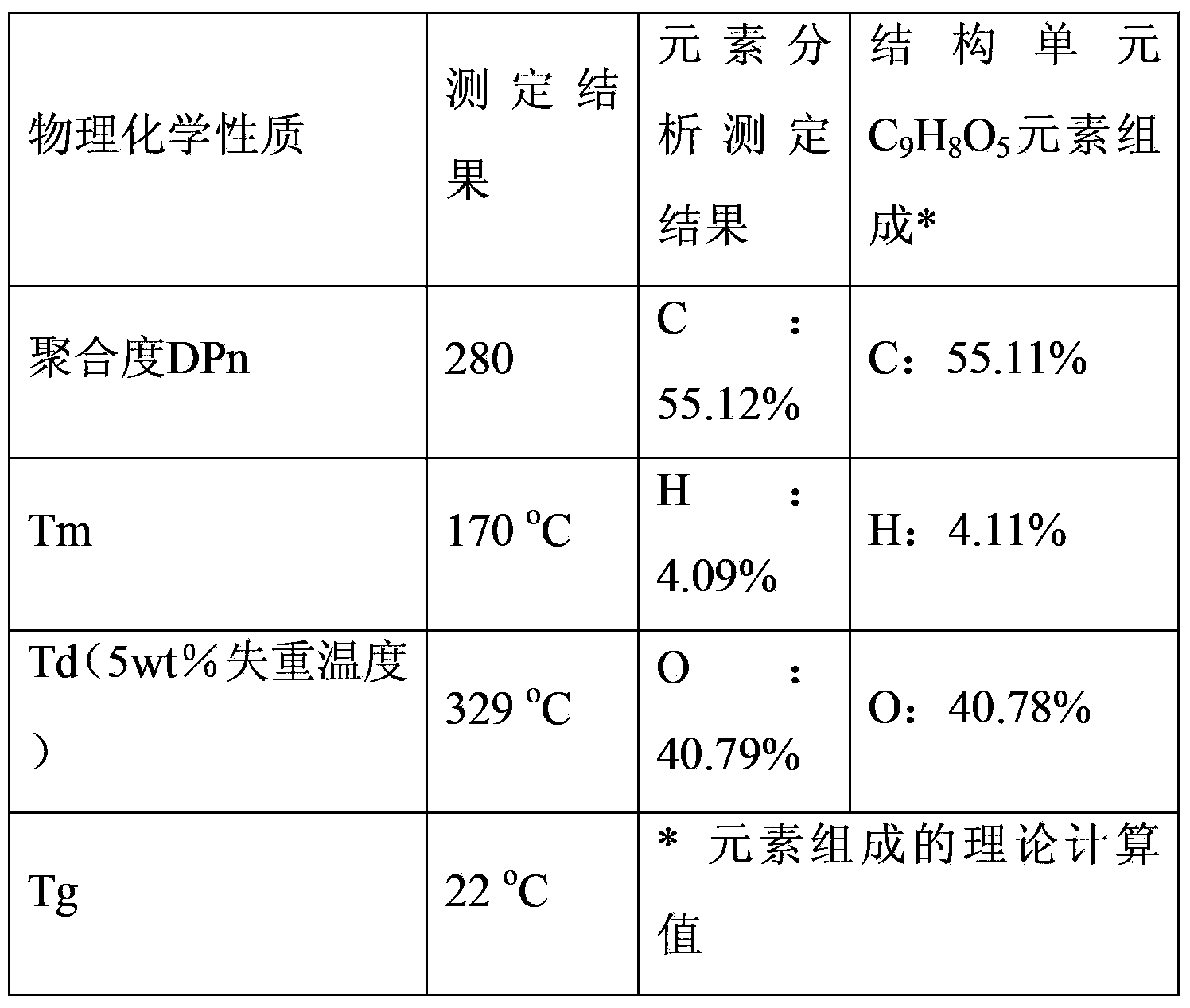Biomass based polyester preparation method
A technology of biomass-based polyester and polyester, which is applied in the fields of polymer materials and chemical engineering, can solve the problems of water pollution, white pollution, non-renewability, etc., and achieve the effect of avoiding the polymerization process and high quality
- Summary
- Abstract
- Description
- Claims
- Application Information
AI Technical Summary
Problems solved by technology
Method used
Image
Examples
Embodiment 1
[0017] Example 1: Add 10mmol of 2,5-dimethylolfuran, 15mmol of succinic acid, and 0.1mmol of dibutyltin oxide into a 50mL round bottom flask. Under the protection of nitrogen, it was heated to 180°C; it was reacted at this temperature for 8h. Unreacted monomers and other impurities were then distilled off under reduced pressure. The temperature was raised to 230°C, the vacuum was adjusted to 5mmHg, and the reaction was continued for 3h. Cool to room temperature, add 10ml of chloroform to dissolve, then drop the chloroform solution of polyester into 60ml of methanol for precipitation, centrifuge, decant and remove the supernatant, the obtained polysuccinic acid 2,5-dihydroxy Methyl furyl ester is a milky white solid, dried under vacuum at 50°C for 12h. Calculated according to the feeding amount of the monomer 2,5-dimethylolfuran, the molar yield of the polymer is 90%. NMR spectrogram measurement results and attribution analysis are: 1 H NMR (CDCl 3 -d 1 ,ppm):2.68(4H,-OC-...
Embodiment 2
[0020] Embodiment 2: with 10mmol2,5-dimethylolfuran, 10mmol oxalic acid, 0.01mmolZn(OAc) 2 Added to a 50mL round bottom flask. Under the protection of nitrogen, it was heated to 100°C; it was reacted at this temperature for 2h. Unreacted monomers and other impurities were then distilled off under reduced pressure. Raise the temperature to 250°C, adjust the vacuum to 1.5mmHg, and continue the reaction for 0.5h. Cool to room temperature, add 10ml of dichloroethane to dissolve, then drop the polyester dichloroethane solution into 90ml of methanol for precipitation, centrifuge, decant and remove the supernatant, the obtained polyoxalic acid 2,5-Dihydroxymethylfuryl ester is a milky white solid, dried under vacuum at 50°C for 12h. Calculated according to the feeding amount of monomer 2,5-dimethylolfuran, the molar yield of the polymer is 96%. NMR spectrogram measurement results and attribution analysis are: 1 H NMR (CDCl 3 -d 1,ppm):5.17(4H,-C-CH 2 -O-), 6.34 (2H, furan-H)....
Embodiment 3
[0023] Example 3: 10mmol2,5-dimethylolfuran, 9mmolmalonic acid, 0.001mmolSb 2 (OCH 2 CH 2 O) 3 Added to a 50mL round bottom flask. Under the protection of nitrogen, it was heated to 135°C; the reaction was carried out at this temperature for 0.5h. Unreacted monomers and other impurities were then distilled off under reduced pressure. The temperature was raised to 270°C, the vacuum degree was adjusted to 10mmHg, and the reaction was continued for 10h. Cool to room temperature, add 10ml of chloroform to dissolve, then drop the chloroform solution of polyester into 80ml of methanol for precipitation, centrifuge, decant and remove the supernatant to obtain polymalonic acid 2,5-dimethylol The furyl ester was a milky white solid, which was dried under vacuum at 50°C for 12h. Calculated according to the feeding amount of the monomer 2,5-dimethylolfuran, the molar yield of the polymer is 98%. NMR spectrogram measurement results and attribution analysis are: 1 H NMR (CDCl 3 -d...
PUM
 Login to View More
Login to View More Abstract
Description
Claims
Application Information
 Login to View More
Login to View More - R&D
- Intellectual Property
- Life Sciences
- Materials
- Tech Scout
- Unparalleled Data Quality
- Higher Quality Content
- 60% Fewer Hallucinations
Browse by: Latest US Patents, China's latest patents, Technical Efficacy Thesaurus, Application Domain, Technology Topic, Popular Technical Reports.
© 2025 PatSnap. All rights reserved.Legal|Privacy policy|Modern Slavery Act Transparency Statement|Sitemap|About US| Contact US: help@patsnap.com



